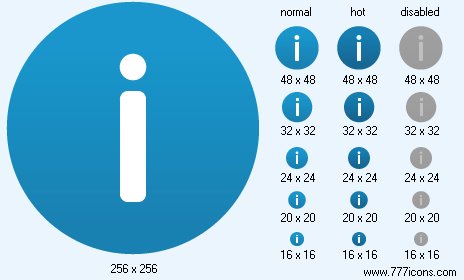


|
| ||||||||
|
|
Information Icon |
|
Image sizes: 256x256, 64x64, 48x48, 32x32, 24x24, 20x20, 16x16, 512x512
File formats: BMP, GIF, PNG, ICO
Would you like to use stock photographs to spruce up your articles?
Article marketing can do wonders for the visibility of your internet venture and it can be used as an incredibly effective internet marketing technique; however, ezines are generally flooded with numerous articles on every topic imaginable; so you should analyze what can make your articles stand out amidst the work of the other writers? Did you give a thought to using stock photographs which can augment the value of your content?If you create content or upload them to various websites that display content from outside authors for the purpose of internet marketing, you need to think about incorporating stock photographs along with an impeccably penned article to attract a larger number of audiences. Here is a look at getting admirable stock photographs without shelling out half of your SEO budget.
There are several free internet establishments that give their visitors stock pictures that designers can include in their work with only an accreditation; these websites offer images of acceptable quality so they can be put to use. However, if this is not a suitable option, you can always head over to a paid site which provides exceptional quality images but of course for a price. Several of these establishments will offer a tiny database of free pictures which can be used sans risk and then they also feature a variety of paid images that can be bought; once you are comfortable using images with your writing.
While you are rummaging through the web pages of these sites select the type of image that you want to buy; It is advisable to begin with the free stuff and then consider purchasing the images one you have ascertained the increase in the readership of your writing upon the incorporation of images. Usually the premium graphics are shown on a bar that runs on top of the webpage, ;while if you click on the lower section,, you should be able to see the free section exclusively.
Pick the graphics that suit your requirements ;alternatively, you can also rummage through the site through the use of keyword phrases which is a far more appropriate alternative; after picking the pictures that you want, you can scroll down to the availability option. Majority of the businesses will offer graphics which come with the regular restrictions ;however, some may have additional criteria. It would be best to take a look at any additional conditions before you consider incorporating the pictures. On the other hand some websites may require you to get a a written word from the photographer that allows you to use the images ; however, for the majority of sites an accreditation that accepts the contribution of the artist is quite enough.
Once you understand the formalities; download the graphics and upload them along with the articles. Ensure that you do not fail to include the name of the graphic designer or image maker in the accreditation section. You can get the name of the photographer by clicking on the username under the section "uploaded by".
On some sites, you will be required to submit a link to your article in the picture comment section. One of the advantages of doing this is that you will be able to get a back link which will help you to get a higher search engine rank and attract more visitors to your website. There are specific websites such as ezine.com are opposed to the idea of using images, other sites such as ehow.com are game to it. Either way, pictures can add glitter to your article; so, if you come up with an impressive piece, think about using a picture to augment its appeal. Another option is to get images from a site that provides clip art style and anime graphics that also work well when used with articles. However, always only use graphics that can be associated with your topic.
Copyright © 2006-2022 Aha-Soft. All rights reserved.
|

